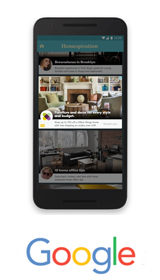 In a nod to mobile’s growing importance for advertisers and its own bottom line, Google on Tuesday unveiled AdWords updates and local ad formats to help marketers execute mobile-focused ad campaigns.
In a nod to mobile’s growing importance for advertisers and its own bottom line, Google on Tuesday unveiled AdWords updates and local ad formats to help marketers execute mobile-focused ad campaigns.
Advertisers can now connect more widely with Google Maps users and give consumers more information in their text ads. Google also gave manufacturers access to its store visit measurement tool for tracking offline purchases against online activity.
“For us, this year is all about mobile, but there is a very different tone to how we think about it,” said Google’s SVP of ads and commerce, Sridhar Ramaswamy, at the company’s Performance Summit in San Francisco.
“Mobile, for the last 10 years, used to be something that was going to happen or perhaps was happening, but we think of this year as the year in which mobile has firmly happened. There are now trillions of web searches per year on Google, and more than 50% of them come from smartphones.”
Location, Location, Location
Nearly a third of all mobile searches relate to location, said Jerry Dischler, Google’s VP of product management for AdWords. Every month people visit more than 1.5 billion destinations based on their related Google searches.
Since 2013, marketers have been able to advertise in Google’s Android and iOS Maps app. Google is now rolling out local search ads that will more widely appear across Google.com and the Google Maps app and website.
One ad format being tested is the promoted pin, which highlights a business near users or along a chosen route. Clicking the promoted pin link leads a customizable business page with the ability to search inventory within a particular store.
“One in four people who avoid stores say it’s because they don’t know if a product is in stock,” Dischler said.
Users cannot opt out of seeing the promoted pins. At this point, it’s unclear whether Google will set a limit for the number of promoted pins visible per page. “We want to do this in a way that works for users and advertisers, and we’re very sensitive about quality,” Dischler said.
Google also gave manufacturers access to its two-year-old store visit metric, letting companies like carmakers connect local search activity to dealership visits.
When Nissan UK tested the tool, for example, it studied which keywords drove visits to its stores.
“They discovered that 6% of mobile ad clicks resulted in a store visit, which is astounding when you consider the average consumer only makes two store visits before buying a vehicle,” Dischler said. “As a result, that delivered a 25-to-1 estimated ROI for Nissan UK.”
The store visits tool is now available to more than 1,000 advertisers in 11 countries, with more to come. Users can opt out by turning off their location history.
AdWords Updates
Google plans to roll out AdWords updates later this year, designed to help advertisers build better mobile campaigns. The updates will let text ads give consumers more information about a business before they click. Instead of one 25-character headline and two 35-character description lines, the ads will have two 30-character headlines and one 80-character description line. In early testing, some advertisers reported a 20% increase in click-through rate compared to previous formats.
Google is also offering responsive display ads that will adapt to the apps and publisher websites on the Google Display Network, as well as native ad inventory that integrates with site or app content.
And advertisers will have more flexibility over how they bid in AdWords. Advertisers will be able to anchor a base keyword to a particular device and adjust bids for other devices up or down by up to 900%.
“With this additional control, advertisers can now optimize bids based on the devices most valuable for their business,” Dischler said, “all from a single AdWords campaign.”
In its past few earnings reports, Google noted that its mobile search business has been a significant driver for revenue. To strengthen the mobile web, Google last week introduced Instant Apps, a feature that will let people use apps without downloading them.














